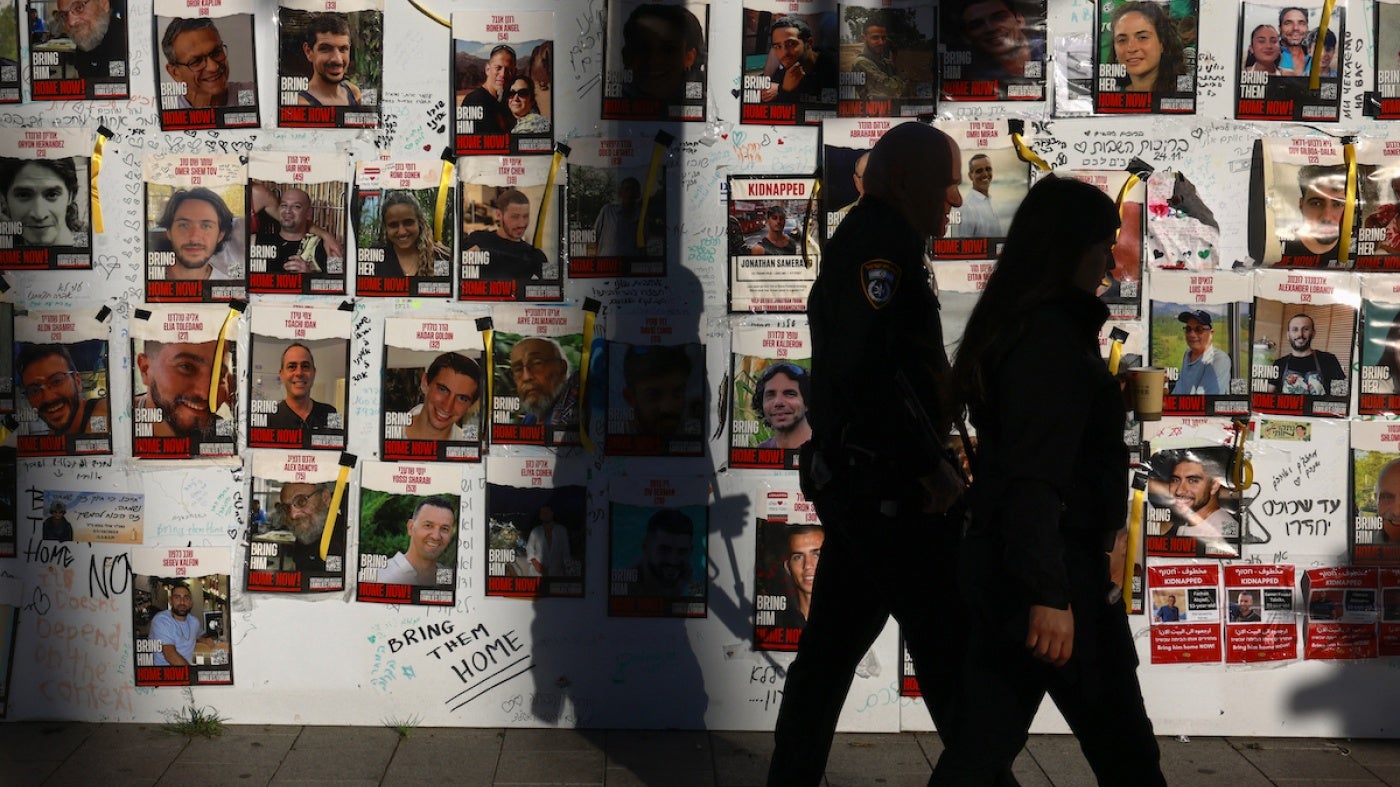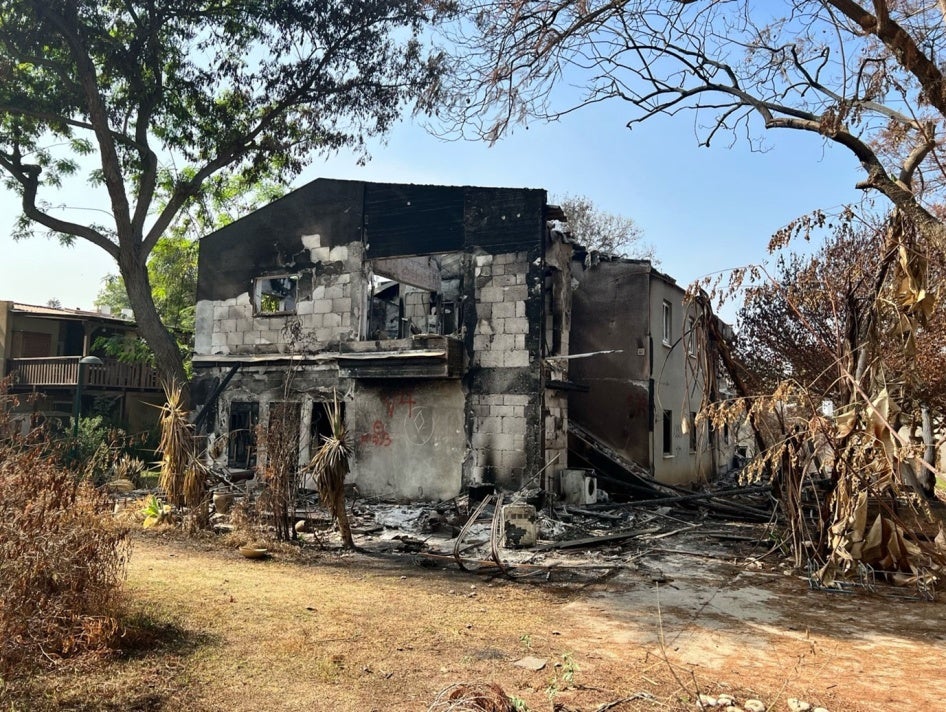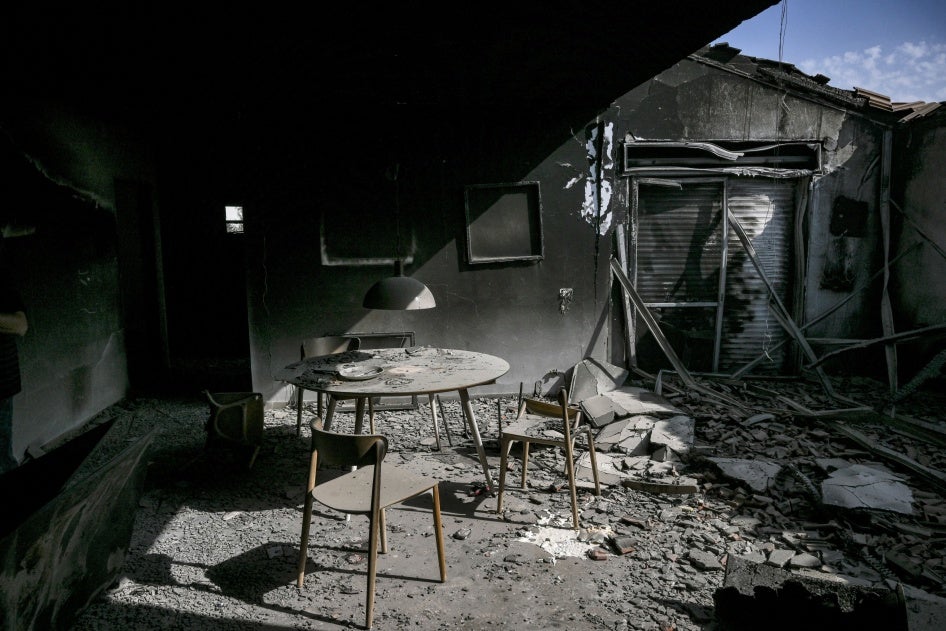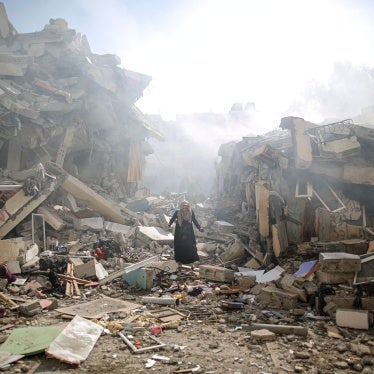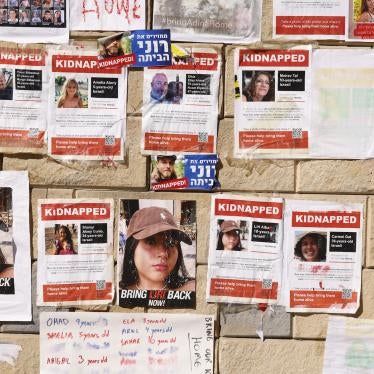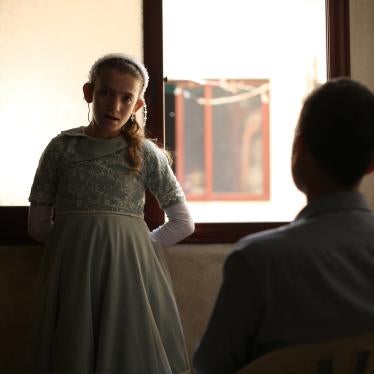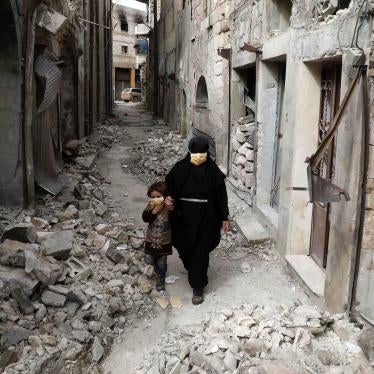Belkis Wille, associate director in the Crisis and Conflict Division at Human Rights Watch, spent three weeks in Israel following the Hamas-led October 7, 2023 attacks on more than 20 communities and a music festival near the Gaza Strip, as well as nearby military bases. Together with her colleague, she tried to establish a clear record of what happened that day when gunmen killed hundreds of civilians and abducted more than 230 people. The scale of the killings on a single day left deep scars, not just for survivors, victims, and their families, but for many Israelis and Jews around the world. Months later, survivors are reeling from the deaths of loved ones and neighbors and fearing for those still held hostage in Gaza. Here, Belkis talks to Birgit Schwarz, communications deputy director for Europe and Africa at Human Rights Watch, about what her team has uncovered so far about the attacks, what it takes to build sufficient evidence when investigating serious international crimes, and why meticulous, independent research is crucial in the struggle for impartial justice.
Belkis, what do we know about how the attacks unfolded?
The attacks started at around 6:30 in the morning, from what we can gather, after Hamas-led fighters breached the fences separating Gaza and Israel. Pretty much everyone we spoke to from virtually all the more than 20 civilian locations that were attacked heard air raid sirens go off at that time. Those living in what is known as the Gaza Envelope (Israeli communities close to the Gaza Strip) are used to sirens and to incoming rocket fire from Palestinian armed groups in Gaza. People there have “safe rooms” in their homes – reinforced spaces to protect residents from such attacks – and most sought refuge in them. But for many these safe rooms proved not to be safe enough.
Survivors described how they spent hours without water, electricity, or food while in hiding, listening anxiously to the gunfire outside. They said that the attackers moved from house to house, broke down doors, and set some homes on fire to force those sheltering inside to come out, and that they shot some, and took others hostage. Many of the bodies that were later found had bullet wounds, others were burned, and some were mutilated, survivors told us.
An open-air music festival was the site of the highest number of killings. As rockets started raining down, festival-goers ran to the carpark, trying to drive to safety. This caused a traffic jam. Some people decided instead to try to escape on foot only to come face-to-face with the gunmen. People were shot as they were fleeing. Some were shot as they hid in trees, one festival organizer told us. The gunmen forced others onto vehicles and took them to Gaza as hostages.
By the time the Israeli military regained control of the affected areas in southern Israel, more than a thousand people – mostly civilians – had been killed, hundreds of houses looted and burned, and more than 230 men, women, and children taken hostage.
What new ground are you hoping to break with your investigation?
One key aim is to rigorously document the abuses and carefully assess the various violations of the laws of war that took place, and whether they might amount to international atrocity crimes.
Since various armed groups were involved in the attacks, we are trying to understand which ones committed specific abuses and the full scale of the crimes they committed. This kind of information will become especially important when it comes to holding the perpetrators to account.
While it will still take some time for us to verify the information we have gathered, our upcoming report will be based on corroborated accounts of 110 witnesses and survivors, first responders, families of hostages, and people who went to the sites of the attacks to rescue others. In addition, we’ve preserved, verified, and contextualized hundreds of pieces of visual evidence to inform this research.
You spent weeks interviewing survivors and witnesses. Which stories have stayed with you?
It is hard to mention just one, as so many were horrific and are now seared in my mind. But there is the story of Sagi Shifroni, a mechanical engineer from Kibbutz Be'eri. Be'eri is an extremely tight-knit community and was one of the worst affected by the attacks. I interviewed Sagi in a hospital in Jerusalem. He was recovering from severe burns. He and his 5-year-old daughter may not have survived had his wife not years ago urged him to disable the outer door handle to their safe room. These safe rooms are required by law in every home built in the Gaza Envelope since the 1990’s. Normally they are designed in such a way that they cannot be locked, so that neighbors can come to the rescue if necessary. This left many people vulnerable once the attackers entered their homes.
With the door handle to Sagi’s safe room missing, the gunmen tried other ways to force their way in, shooting at the door and the hinges. When this didn’t work, they set fire to the house. We spoke to neighbors who witnessed what happened, including a man who saw Sagi jump out a window into their backyard, with his daughter in his arms. When he had smelled the fire, he wrapped her in blankets and made her hold a pillow to her face. The little girl remained unscarred. Sagi’s feet, however, were so badly burned that the skin was peeling off.
What access have you had to the affected areas?
Israeli first responders took my colleague to Be'eri, and he was able to see the site where Sagi and his daughter almost died. But we never got permission from the Israeli authorities to go to other communities that had been attacked.
This made the verification of information we gathered from witnesses and survivors harder. Ideally, when people describe to us what they saw and lived through, we would corroborate their accounts for ourselves by visiting the site and matching the details they shared with us with the evidence on the ground, like a burned house or a door riddled with bullet holes.
We were also unable to speak with Israeli law enforcement or military personnel who were the first to arrive at the scene. Their accounts would have been incredibly valuable. The authorities, however, never formally responded to our requests.
What else has made this research particularly difficult?
When hundreds of people are killed in a single day, untangling what happened takes time. New information is coming out daily, even months after the attacks took place: information that’s important to understanding the full scale of the attacks.
Until now, people are reeling from the brutality of the assault and the enormity of the loss of life around them. Some of the bodies took weeks to be identified. So, while we were conducting our research in Israel, many survivors and relatives didn’t know if their loved ones were still alive. They all hoped their missing relatives had been kidnapped, because it was better than the alternative. Others were so traumatized they were simply not able to speak.
Conducting research under such circumstances demands patience and sensitivity in order to avoid retraumatizing or causing other harms to people affected by grave abuses.
Many of our interviews had to take place in the lobbies of hotels that have become temporary homes for those who cannot return to their communities. The lobbies were full of people, including children. The kids were jumpy and anxious, and parents worried about adding to their distress by talking about their traumatic experiences. Also, we had to be mindful of the fact that people had to attend funerals, sometimes four or five a day. All of this further complicated the research.
What are some of the stories the families of those being held hostage told you?
From the moment we arrived in Israel on October 11, we started interviewing the families of some of the hostages. We went to a village near Jerusalem to speak to Orian Adar. Her grandmother, 85-year-old Yaffa Adar, and her 38-year-old uncle, Tamir Adar, a farmer, were taken from Kibbutz Nir Oz. They are among 10 relatives of Orian’s who lived there. Orian said that during the attack on the kibbutz, Tamir’s wife and children were in the safe room, while Tamir was outside. In his last message, sent to his wife at 9 a.m., he implored her not to open the safe room for anyone, including him.
Orian told us her grandmother Yaffa uses a walker and hearing aid. She has a heart condition, kidney disease, chronic pain, and multiple slipped discs. She showed us the long list of medications that Yaffa takes daily. The family watched with horror a video published on social media showing Palestinian fighters driving Yaffa through Gaza in a golf cart. Yaffa was eventually released in late November. In January it was unfortunately announced that Tamir had died. But more than 100 people appear to still be held as hostages. Some of them are sadly no longer alive.
Holding people as hostages is a war crime. We and many others have been calling on Palestinian armed groups to immediately and safely release the civilians who are still in their custody. Turkey, Iran, Gulf states, and other governments supporting Hamas should be demanding the same and call for accountability. Until their release the hostages should be treated humanely, be allowed to communicate with their families through private means and receive visits by an impartial humanitarian agency like the International Committee of the Red Cross.
You mentioned the preservation and analysis of visual evidence earlier. Can you explain how you use videos and photos when building evidence for war crimes?
Open-source resources such as videos and photos are key to being able to reconstruct what happened when investigating possible war crimes, especially where access to the actual crime scenes is limited. Countless videos and photos emerged on social media in the aftermath of the carnage. They are horrifying. While many were genuine, some spread false news, doctored content, or repeated unverified information. Verifying what’s real adds another layer of complexity to our investigation.
The first thing we need to do with every video or photo we come across is to determine whether it is real or originated from a different context, like an armed attack from a totally different country years ago, something that often happens. We analyze where a picture was taken or where events captured in a video occurred. This process is called geolocation. We do things like identifying landmarks visible in the videos such as a particular building or a street corner, and check if weather patterns and shadows match the actual weather and time of day on the day the video or picture was purportedly captured. Once we are confident that a photograph or video is authentic, we scrutinize it, comparing what it shows to the statements we have gathered from witnesses. This helps us determine if what we were seeing is consistent with what we have been told and what else might have been going on at the same time.
There have been harrowing reports of sexual violence and other forms of gender-based violence committed during the attacks. Were you able to verify those?
It’s vitally important to investigate sexual violence, and in doing so, we also need to work carefully to avoid causing further harm. Around the world, Human Rights Watch adopts an approach that centers on the needs and rights of survivors, witnesses, and the families of victims, and attempts as best we can to avoid retraumatization. That’s one of the complexities we deal with in all of our work, and it is especially critical when documenting sexual violence.
We have reviewed statements from people who say they witnessed cases of rape and other forms of gender-based violence. And some first responders we spoke to described seeing women’s bodies in conditions or circumstances that could be consistent with sexual violence.
However, there is a lack of forensic evidence that makes it much harder to know the scale and nature of the abuses. We have not interviewed anyone who is a survivor of sexual violence committed during the attacks on October 7.
We are still monitoring and assessing any information that’s being reported. There may be sexual violence victims who were killed, and, as it is often the case with sexual violence, survivors who may not be ready or may have chosen not to divulge information about their experiences for reasons that could include trauma and stigma. In the past month, news media have published interviews in which several survivors of the attacks described witnessing rape. A careful, independent, survivor-centered, and credible investigation of all reports of sexual violence – and other forms of gender-based and other violence – on October 7 is urgently needed. Sexual and gender-based violence during armed conflict are war crimes.
When will the full results of your investigation be published?
We are aiming to publish the body of evidence we have been able to gather in the coming months. We are hoping that this will help ensure that the perpetrators of these crimes, and especially those responsible at the highest levels for grave crimes, will one day have to answer for their crimes in a court of law, and that this will bring survivors, the victims, and their families closer to obtaining justice.
